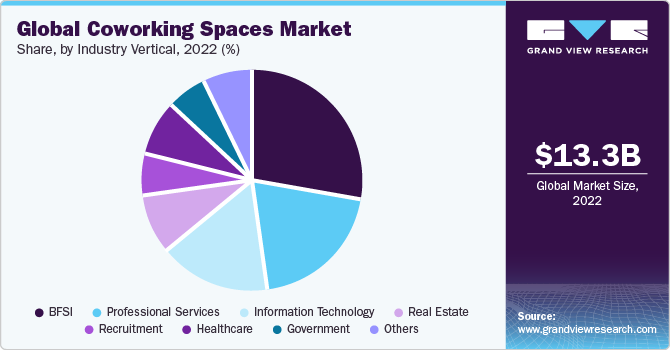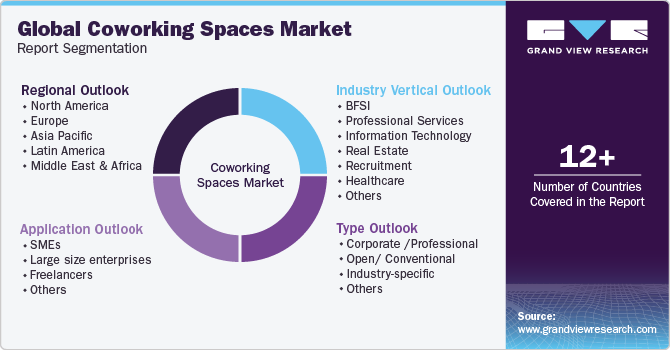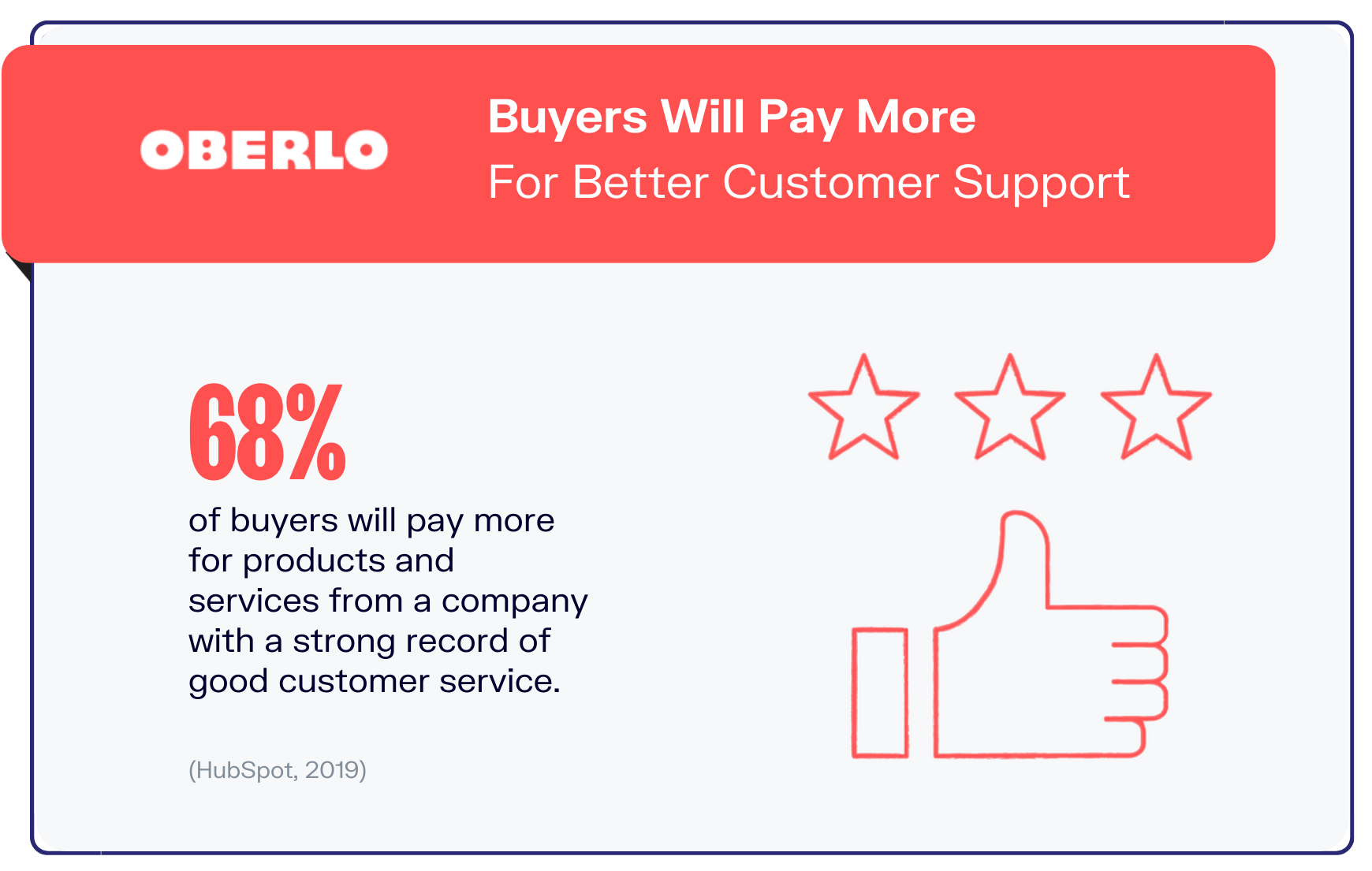The coworking industry has experienced rapid growth over the last decade. According to a 2022 report, coworking office businesses earned more than $14 billion in 2022. The market continues to expand with a projected compound annual growth rate (CAGR) of 17.24% from 2022 to 2028.

As more professionals seek flexible and collaborative work environments, the demand for coworking spaces continues to rise. Not only do these spaces offer the amenities and community lacking in a traditional home office, but they also provide networking and growth opportunities for solopreneurs and remote workers.
This guide will walk you through how to start a coworking space. Topics include market research, competitive analysis, registering an EIN, obtaining business insurance, forming a legal business entity, and more.
1. Conduct Coworking Space Market Research
Market research is essential to starting a successful coworking space. Research offers insight into your target market, local market saturation, and how other coworking spaces are drawing in new consumers. Market research helps develop a thorough coworking space business plan.

Some details you’ll learn about this business model as you start your own co working space include:
- In terms of number of spaces, the U.S. leads with over 4,000 open or planned spaces.
- The top metropolitan areas for growth include New York City, Los Angeles, Chicago, Washington D.C., and Austin.
- The remote work revolution has workers seeking spaces outside the home for increased productivity and socialization.
- More independent consultants, freelancers, and solopreneurs need flexible offices to conduct business meetings and access amenities a home office cannot provide.
- Corporate demand is also rising as companies adopt hybrid work models. 30% of coworking members are now enterprise employees.
- While the market remains fragmented among mostly regional and local operators, funding continues to pour in, suggesting ample room for new concepts.
With sound business planning and adept community-building skills, there remain substantial opportunities across this high-growth industry.
2. Analyze the Competition
Understanding the competitive landscape is critical for successfully launching a new coworking space. Begin by identifying direct competitors in your immediate geographic area to analyze pricing models, amenities, layouts, and community events.

Tour the spaces of local businesses, take photos, and note strengths and weaknesses compared to your concept. Review public listings on sites like Coworker and ShareDesk to gauge the coworking market’s saturation in your region, including average occupancy rates and membership fees.
Look beyond physical location to examine major national or international coworking brands like WeWork, Impact Hub, and Serendipity Labs. Study their expansion plans, marketing messaging, and member demographics. Large operators typically seek enterprise clients versus independents focused on solopreneurs and startups, but competition still exists for the hybrid remote worker.
Survey residents and professionals through online groups and community hubs to gauge unmet demand. SafeGraph data measuring foot traffic to nearby spaces can determine if opportunities exist to cater to underserved groups. Zapier‘s Coworking Space Startup Kit also provides competitive analysis templates to map community preferences and existing amenities.
An effective online presence is equally imperative when competing for members. Ensure your website communicates your unique value proposition compared to other options. Social media and local partnerships play a pivotal role in driving early sales and buzz.
3. Costs to Start a Coworking Space Business
When starting a coworking space, initial costs typically range from $50,000 to over $500,000 depending on size, location, and services offered.
Start-up Costs
- Lease or Purchase Space: The largest upfront cost is securing physical space, likely ranging from $3,000-$8,000 monthly for a minimum 5-year lease.
- Furniture & Interior Design: Outfitting the space accounts for the second-highest start-up cost. All-inclusive desk and chair combos average $300-$600 each. Private offices furnish for $2,000-$3,500.
- Equipment: Top amenities like high-speed wifi ($3,000), printing stations ($2,500), phone booths ($4,000), kitchen outfitting ($10,000) and a reception area ($5,000-$15,000).
- Permits, Licensing & Legal: Expect $5,000-$10,000 to cover business licensing, permits, landlord negotiations, and legal consultations around lease terms.
- Branding & Marketing: Quality branding and an initial marketing push add $5,000-$15,000 to launch budgets.
- Staffing & Training: 1-2 community managers at $40,000-$60,000 salary plus taxes, benefits, and ongoing training costs are imperative before opening doors.
Ongoing Costs
- Rent/Mortgage Payments: $3K-$15K monthly
- Staffing: $5K-$15K+ monthly
- Amenities & Common Area Services: $1K-$5K monthly (coffee, printing, internet, events, office supplies)
- General Operating, Property Management & Maintenance: $1K-$2K (insurance, utilities, cleaning services, repairs)
- Admin, Accounting & Payroll: Platform Fees $500 per month
- Marketing & Advertising: $2.5K-$5K monthly initial ramp up, with refined targeting over time
- Capital Expenditures & Reserves: 5-10% of gross revenue
As you scale, developing private office suites and dedicated desks allows for additional revenue streams to support operations. Continual community development also plays a key role in retention and long-term profitability.
4. Form a Legal Business Entity
When starting a coworking business, choosing the right legal structure impacts everything from personal liability to taxes and investor options. Weigh these key considerations for each entity type:
Sole Proprietorship
A sole proprietorship offers the easiest setup with no formal registration needed outside routine licensing. However, founders bear unlimited financial and legal liability for business debts and lawsuits. Retaining talent may prove difficult without formal ownership stakes or funding opportunities.
Partnership
General partnerships allow co-founders to combine resources and split decision-making. But similar to sole proprietors, each partner shoulders full liability risks, and taxes flow directly to individuals. Fundraising options and succession planning remain limited without more advanced agreements. Disputes between partners may force costly dissolution.
Corporation
A corporation designates the business as a separate legal entity, shielding owners from liability and facilitating influxes of angel or venture capital. However, extensive annual filings and start-up costs exceeding $1,000 deter most early-stage coworking ventures. Double taxation of profits and complex ownership tracking through stock shares add unnecessary burdens.
Limited Liability Company (LLC)
Forming an LLC combines liability protections with pass-through taxation to avoid corporate double taxation. Costs range from $500 to $2,000 depending on the state. Florida, Delaware, Texas, and Nevada see frequent formations due to strong asset protection laws. The flexible structure works well for coworking spaces.
5. Register Your Business For Taxes
An Employer Identification Number (EIN) serves as a unique tax ID for business entities, similar to a Social Security Number for individuals. Coworking spaces legally organized as LLCs must obtain their own EIN even if they do not have employees.
The IRS offers free online EIN applications typically processed instantly.
To complete Form SS-4 and obtain an EIN, have detailed information on hand regarding your LLC formation date, state registration details, mailing address, and responsible party.
- Step 1 starts by determining if you can apply online versus mailing a physical form. As a new domestic LLC, you meet eligibility to use the streamlined web application.
- Step 2 asks a series of screening questions regarding your entity type, reason for applying, and type of LLC before allowing you to begin the application.
- Step 3 requires entering your LLC’s legal name and mailing address along with your member/manager details.
- Step 4 covers primary business activities, first wages paid to date, highest employee count expectations, and the need for various federal tax forms.
- Step 5 asks for the first date you need or will need the EIN along with banking details and confirmation of an identity protection PIN is not required.
After agreeing to legal notices in Step 6, Step 7 generates your EIN immediately on screen upon submission.
The entire application takes less than 15 minutes. You avoid mailing delays and speak with an IRS representative if any questions arise. Print or screenshot the confirmation containing your new EIN. Update this across state registrations, bank accounts, invoices, and tax forms.
6. Setup Your Accounting
Proper financial management maximizes a coworking space’s profitability and minimizes IRS scrutiny.
Accounting Software
Implementing small business accounting software like QuickBooks streamlines everything from tracking monthly recurring revenue to automating expense reporting. QuickBooks seamlessly syncs with bank accounts and credit cards to log real-time transaction data. Robust integration with coworking management platforms like Nexudus further eliminates double entry.
Hire an Accountant
While software efficiently handles day-to-day accounting, partnering with an accountant optimizes compliance. A qualified small business CPA provides objective insight into the health of your workspace through quarterly overviews. Expect costs between $200 to $500 monthly for comprehensive bookkeeping and advisory services.
Open a Business Bank Account
Coworking spaces should open dedicated business checking accounts and credit cards solely for company use, never mingling with personal finances. Any commingling muddies expense categorization. Business banking relationships become vital for accessing small business loans and lines of credit as operations grow.
Apply for Business Credit Cards
Applying for a small business credit card not only simplifies accounting but also builds your commercial credit profile for bigger financing later on. Issuers like Chase Ink or Capital One Spark evaluate both your credit score and business details like income, time in business, and industry risk to determine approval and initial credit limits.
7. Obtain Licenses and Permits
Neglecting necessary permits and licenses risks hefty fines or closure at the hands of local zoning, health, and safety authorities. Find federal license information through the U.S. Small Business Administration. The SBA also offers a local search tool for state and city requirements.
Zoning permits validate coworking aligns with local land use plans before signing any lease. Conditional use permits may apply in certain districts. Foodservice introduces added constraints per local health codes for safe prep and handling.
Construction permits ensure build-outs and any structural modifications adhere to commercial plans and disability access requirements like wheelchair ramps and restroom accommodations. Submit detailed floorplans, materials being used, scopes of electrical and mechanical work plus ADA compliance checklists to get green-lit before contractors begin work.
Fire and safety inspections vet life systems like smoke detectors, fire extinguishers, emergency exit signage, and panic hardware above standard office grades. These agencies re-inspect before certificates of occupancies are awarded. Some municipalities require posting maximum room capacity limits based on square footage.
Hosting events with alcohol triggers liquor license needs – often prohibitively expensive for Occasional functions. However, hosting weekly happy hours or renting space for private parties requires proper bartending and handling training plus compliance audits. Shifting usage to include music or adult entertainment introduces additional red tape.
Consult local small business development centers for complete permitting and license checklists to legally open doors. Town halls also provide free public guidance to steer construction. While intimidating, proper diligence sets up safe, sustainable foundations for scaling your workspace.
8. Get Business Insurance
Insuring your workspace guards against financial ruin when the unpredictable occurs. Policies cover liability claims, property damage, loss of income plus employee incidents across core offerings:
- General liability insurance protects your company if a member gets injured onsite and decides to sue. Minimum limits of $1 million per occurrence are advised with most carriers like Hiscox and The Hartford.
- Property insurance covers damage from fire, theft, and natural disasters to replace furnishings, equipment, and construction investments.
- Business interruption insurance provides cash flow when forced to close temporarily after an incident.
- Workers comp insurance meets state laws for payroll staff injuries/illnesses.
Even seemingly minor incidents incur massive uninsured costs:
- A small grease fire in the kitchen caused smoke damage and forced a 2-week closure mid-month before repairs were complete to meet safety codes.
- An evening pipe burst floods the basement storage, destroying expensive AV equipment and community chairs right as your busiest season begins.
- A member trips over loose carpeting on the stairs breaks an arm, and files a $100k claim alleging negligence.
Applying for small business policies takes about one hour via online quotes or brokers like CoverWallet and NextInsurance. Have your LLC registration, space specifications, and member capacity handy. Quarterly installments help ease budget pain after the initial paperwork investment.
9. Create an Office Space
While coworking spaces focus on housing remote professionals day-to-day, dedicated office arrangements prove vital for admins, meetings, and strategic planning behind the scenes to sustain operations.
On-Site Office
Running a coworking business model comes with perks. An on-site office is easy to accomplish and doesn’t require any new contracts to sign. Other benefits include no extra spending as internet and phone services are already on-site.
Commercial Office
A 2,000+ sq ft dedicated commercial space once enough capital and cash flow from members. Expect minimum 5-year leases around $3,000+ monthly for customizable floorplans, often located downtown. Dedicated offices allow for consolidated operations but require extensive upfront investment on top of licensing, equipment, and staffing.
10. Source Your Equipment
Outfitting a functional, Instagram-worthy coworking space requires substantial upfront investments in furniture and amenities. Savvy founders explore these four routes to creatively meet budgets:
Buy New
One-stop shops like IKEA and CORT Furniture offer affordable desks, chairs, sofas, and complete office packages under $500 per person. Bulk orders often unlock free shipping or volume discounts on items reconfiguring layouts later. While economical, cheaper mainstream sets sacrifice style points compared to premium boutique goods.
Buy Used
In leveraging used sources, value reigns supreme landing name-brand furnishings at 50-75%+ off retail. Commercial liquidators like Herman Miller and Knoll set by the truckload via timed sales. Higher quality carries stronger residual value should equipment need to change down the road. Vet items closely for defects before placing wagers.
Rent
Rent-to-own companies allow budding ventures to rotate cafe tables, private office suites, and AV carts monthly with flexible upgrade options rather than huge upfront buys. However, cumulative rental fees quickly outpace outright purchasing. Be sure to calculate total “own” costs before committing.
Lease
Commonly bundled within commercial leases, landlords equip turnkey spaces as a package deal passing those asset costs through via amortized monthly installments. This frees working capital for more pressing build-outs but creates control over selecting the exact items leased. The reconfiguration also requires consent to add constraints.
11. Establish Your Brand Assets
Crafting a compelling brand identity and assets helps coworking ventures stand out from generic rental spaces to attract ideal members. Investments in logo design, websites, and promotional materials establish credibility from day one.
Getting a Business Phone Number
Virtual phone services like RingCentral provide customizable business phone numbers with professional voicemail greetings, call routing to any device, and SMS capabilities for fielding inquiries and event registrations on the go. Expect costs around $30+ monthly.
Creating a Logo and Brand Assets
A thoughtfully designed logo synthesizes your workspace’s values, personality, and vision into an iconic graphic mark. Logo maker Looka offers affordable AI-powered creation and iterations for streamlining design complexities. From there, having complimentary fonts, colors, patterns and graphic elements on branded collateral builds an immersive experience.
Creating Business Cards and Signage
Business cards serve as vital sales tools for staffers to plug openings during networking events, tradeshows, and community meetups. High-quality cards from Vistaprint relay professionalism with every exchange, featuring the company logo, website, phone number, email, and social media links. Durably printed cards as low as $10 for 250 double-sided cards.
Purchasing a Domain Name
Secure the perfect .com domain for branding consistency across digital properties. Providers like Namecheap offer domains starting around $9 annually alongside intuitive website builders to publish the company’s online presence.
Building a Website
DIY website builders like Wix make launching information-rich sites possible without coding expertise through flexible templates, SEO optimization, and integrated booking functionality for tours and events. For more custom designs, experienced freelancers on Fiverr design and develop professional sites for around $500+.
12. Join Associations and Groups
Tapping into local business alliances, networking events, and the online coworking community accelerates industry knowledge and customer acquisition for new coworking ventures. These hubs provide access to veteran advice and collaborative marketing opportunities.
Local Associations
Industry associations like the Global Workspace Association share training programs, host conferences, and lobby for remote work legislation. Local chapters also coordinate around issues directly impacting regional ecosystems. Well-connected startup founders may find mentorship steering growth or even investment relationships forming.
Local Meetups
Sites like Meetup aggregate professional, social, and hobby gatherings in every market. Attending technology, entrepreneur and creativity-focused meetups raises visibility before niche audiences and fosters partnerships with complementary businesses. Expect to connect with remote workers, gig economy participants, and location-independent teams eager for new spaces opening.
Facebook Groups
Facebook communities create a “digital water cooler” effect for coworking owners worldwide navigating similar opportunities and obstacles in one platform. The Co-working spaces shared offices (remote working) and Coworking groups are a great place to start. Participating in discussions builds camaraderie and reveals best practices from veterans.
13. How to Market a Coworking Space Business
Implementing an integrated marketing strategy maximizes exposure for fledgling coworking brands to drive sustainable member acquisition. While leveraging one’s immediate network and delivering referrable experiences from the foundation, exploring complementary digital and traditional channels streamlines scaling.
Referral Marketing
Referrals from satisfied members and partners generate the highest quality leads at the lowest costs. However, cultivating referrals requires consistently exceeding expectations. For example, coworking owners might offer members a 10% credit towards next month’s fee for any new signup they directly refer to.
Digital Marketing
- Google and Facebook ads target nearby professionals based on their demographics, interests, and search behavior to funnel visitors toward tailored landing pages. Expect to invest $500 per month in testing and optimizing for ROI.
- Start an email newsletter highlighting member spotlights, upcoming events, and space availability to engage the existing community.
- Writing SEO-optimized blog content educates site visitors about remote work tips, small business advice, and “day in the life” stories.
- Run retargeting ads across social media and Google Display Network to re-engage past website visitors who previously showed interest.
- Post video tours, testimonials, and daily space activities on TikTok and Instagram Reels to humanize the experience.
Traditional Marketing
- Print full-color flyers and distribute them across nearby corporate offices, hotels, cafes, and community boards. While less measurable, hyper-local impressions raise awareness affordably.
- Take over a strategic billboard or schedule radio spots driving commuter impressions during peak transit times when remote working needs are top of mind.
- Host public entrepreneurship and innovation workshops as lead generation activities.
- Publish guest articles in local business journals to establish thought leadership.
- Sponsor hackathons and Demo Days to expose the space offerings to developers, creators, and digital nomads.
14. Focus on the Customer
Delivering exceptional service distinguishes thriving coworking ventures from transactional office rental competitors. How spaces make members feel directly impacts retention and referrals.

Learn member names and understand their business goals. Check-in regularly to foster community through hosted meetings and curating introductions to mutually beneficial connections.
Celebrate member accomplishments like product launches on social media and member newsletters. Consider occasional surprise perks like free coffee cards, credits for conference room access, or merch giveaways.
Send periodic NPS surveys to benchmark satisfaction and address any shared criticisms before minor gripes become major grievances.
Quickly resolving on-site problems like imperfect wifi or conference room tech glitches makes professionalism shine. The coworking environment should empower productivity. Coworking thrives by building personal hospitality and purposeful relationships unmatched by cubicle farms.
When members feel invested in and supported, they eagerly refer teams within their networks for years to come. Positive word of mouth and online reviews drive ongoing revenue supporting founders’ visions.
